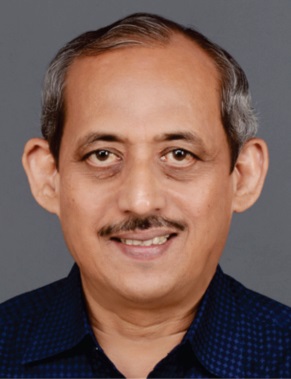₹300








Gone are the days when teachers used to be in the centre of education but now the focus is on the students. Now, teachers cannot carry out punishments and act with extreme strictness. Today, there is no co-relation between age and knowledge. With the explosion of facts and information nobody can claim that by virtue of age or by the mere fact that they were born earlier, they know more. Now, the things will move with courtesy and humbleness. The present teacher cannot be student’s father. He should prepare himself to play the role of an elder brother/sister or of a friend who will facilitate and encourage the child. The knowledge acquired in this environment will travel long distance with the student. Teachers will develop shared understanding with which knowledge will be created.
For the holistic development of a child, it is imperative to develop a book which not only deals with the principles and innovations but also throws light on the practical approach of teaching skills. Such a book should emphasise on the importance of learning skills rather than memorising by rote mechanism. If a child is unable to develop learning skills then we would have to reorient our teaching techniques.
A complete book on how to impart quality education & knowledge to students.
____________________________________________________________________________________________________________________________________________________________________________________________________________________________________________________________________________________________________________
Contents
Editorial : Qualitative Education is Possible through Multidimensional Efforts —Pgs. 5
1. Mahatma Gandhi’s View About Education —Pgs.
—R.K. Prabhu and U.R. Rao —Pgs. 11
2. Philosophy of Education —Pgs.
—Swami Vivekanand —Pgs. 19
3. What will not be Allowed in My School —Pgs.
—Gijubhai —Pgs. 25
4. Give Us A Role Model —Pgs.
—A.P.J. Abdul Kalam —Pgs. 29
5. Letter to His Son’s Teacher —Pgs.
—Abraham Lincon —Pgs. 39
6. Every Child is Special —Pgs.
—Aamir Khan —Pgs. 42
7. Peace will Establish through Education —Pgs.
—Shakira —Pgs. 46
8. Child —Pgs.
—Binodanand Jha —Pgs. 50
9. ‘Padho Purbi Champaran’ Special Programme for Improving Basic Reading —Pgs.
—Rukmini Banerjee —Pgs. 55
10. Storytelling: What is the Use? —Pgs.
—Krishna Kumar —Pgs. 65
11. Language Teaching at Primary Level —Pgs.
—Binodanand Jha —Pgs. 75
12. A School’s Said Thought —Pgs.
—Gyandeo Mani Tripathi —Pgs. 83
13. How to Teach Mathematics —Binodanand Jha —Pgs. 91
14. What is a ‘Good’ Classroom? —Subir Shukla —Pgs. 96
15. Children’s Library in Schools —Pgs.
—Binodanand Jha —Pgs. 104
16. Story of a Learner —Pgs.
—Pushpa Jha —Pgs. 109
17. One Who could not See Despite Seeing —Pgs.
—Hellen Killer —Pgs. 116
18. How Children Learn —Pgs.
—Binodanand Jha —Pgs. 118
19. Requirement of Children with Special Needs —Pgs. 119
20. Evaluation —Pgs. 123
21. Some Indicators of Quality Education —Pgs. 125
22. Duties and Responsibilities of School and its Stakeholders —Pgs. 126
23. Human Development —Pgs. 131
24. Motivational Short Stories —Pgs. 133
25. National Anthem, Rashtrageet and Some Poems —Pgs. 138

Dr. Binodanand Jha is an erudite scholarly personality in the world of education in the State of Bihar. He is considered an authority in the field of pedagogy and has extensively worked in the field of education and its administration. Author of a number of books, his articles are regularly published in renowned newspapers, magazines etc. His emphasis on the need of scientific fervour among teachers and students is widely appreciated.
He got rich experience through a UNICEF sponsored project ‘SPEED’ in Elementary Education. As Director, Mass Education, he has worked with great fervour for the inclusion of children from Dalit, Mahadalit Sections and minority children in schools and also female literacy programme in the State. Presently he is posted as Director, Research & Training in the Department of Education, Govt. of Bihar and has been actively associated with the World Bank Project ‘Enhancing Teacher Effectiveness in Bihar’.